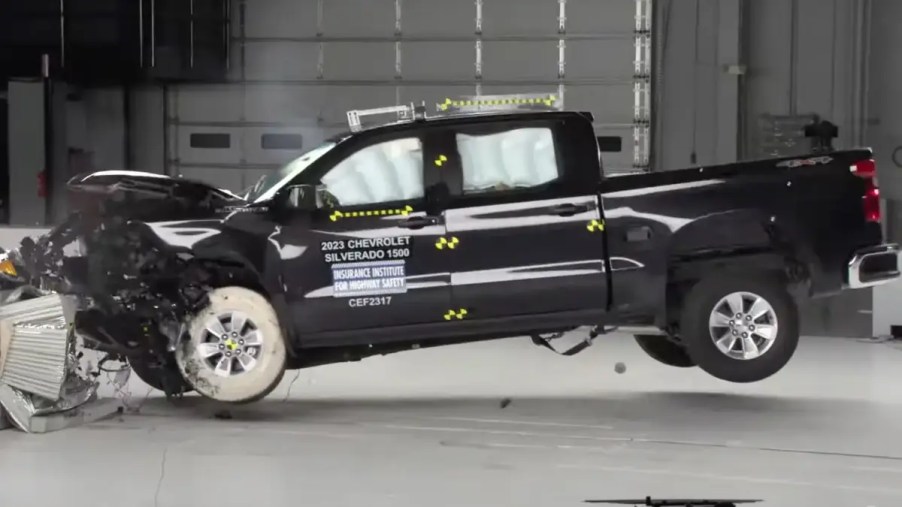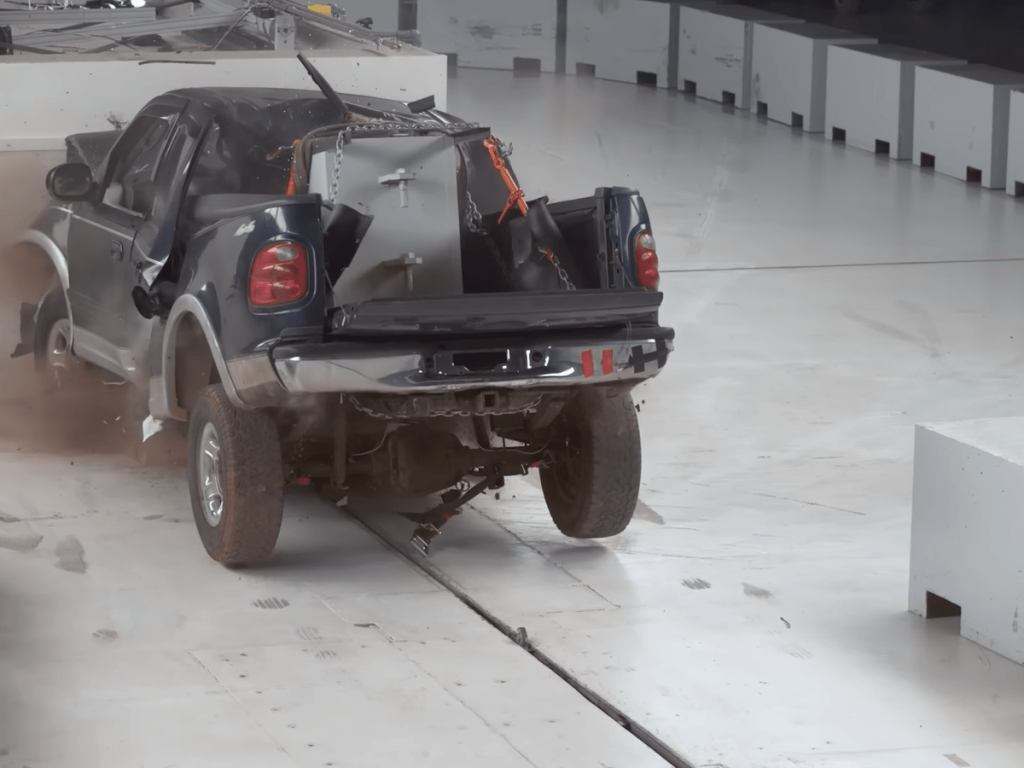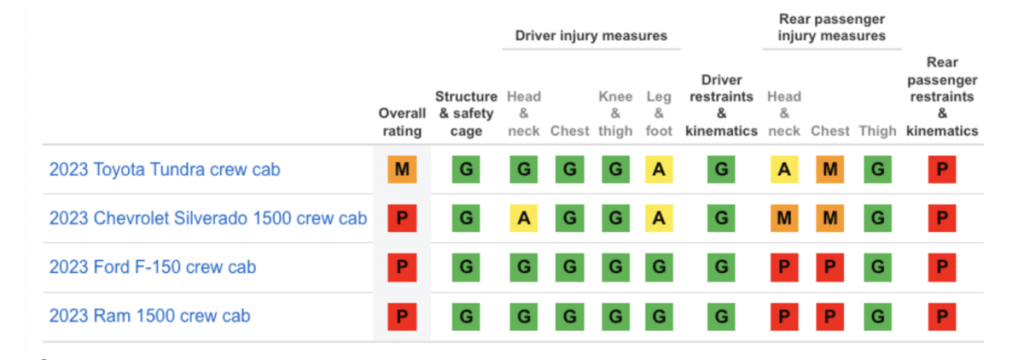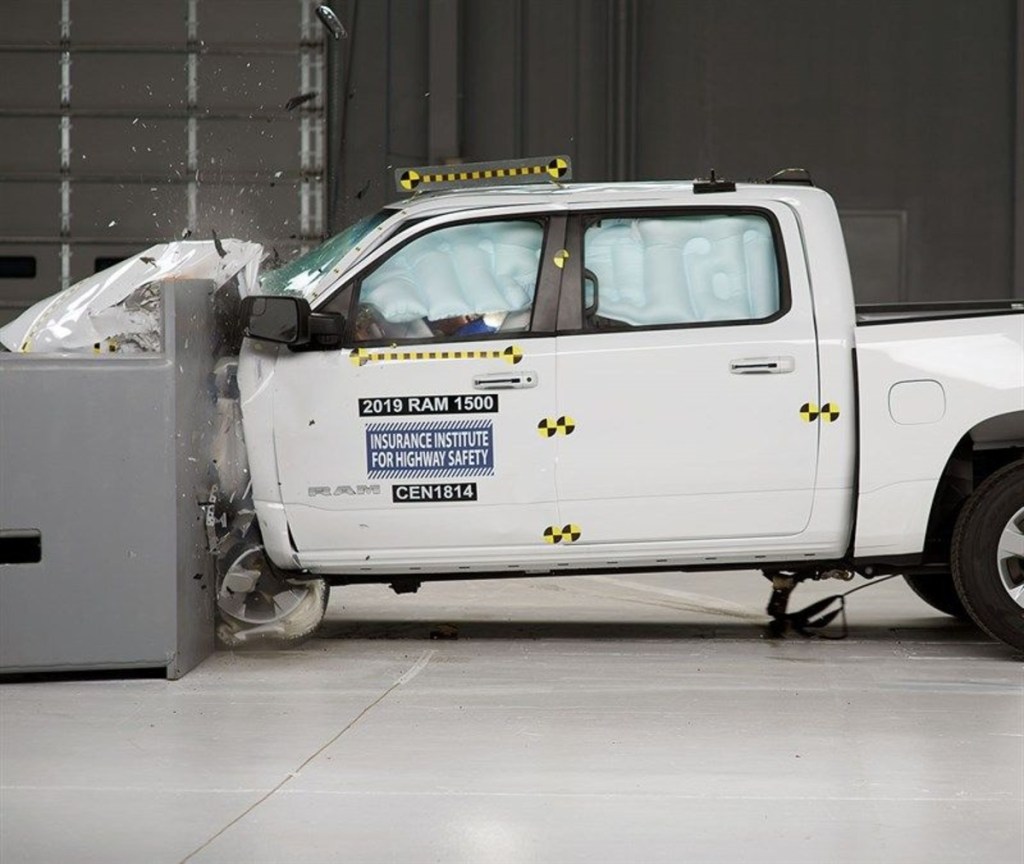
All 2023 Full-Size Trucks Flunked This IIHS Crash Test
If it is a full-size truck and it has a back seat, it didn’t pass the Insurance Institute for Highway Safety (IIHS) crash testing for backseat passengers. That means all 2023 Ram 1500, Chevrolet Silverado, Ford F-150, and Tundra crew-cab or extended-cab trucks did poorly in rear-passenger crash testing. If you’re in the front seat, you’re golden, but not if you’re in the back.
The Tundra got a Marginal rating, while the Domestics got a Poor rating for rear passengers. Neither is good. Here’s what the IIHS says about its testing in this category, “In 2022, we updated the moderate overlap test to address lagging protection for rear occupants. Now, a second, smaller Hybrid III dummy has been added.
What makes for a Poor IIHS crash test rating?

“The second dummy, whose size represents a small woman or an average 12-year-old, is positioned in the second-row seat behind the driver. The updated evaluation incorporates new metrics that focus on the injuries most frequently seen in rear-seat occupants.”
Either a Marginal or Poor rating is not acceptable for four of the best-selling vehicles in the U.S. The back seat’s where all of the kiddies end up. Yet the IIHS contradicts its findings by saying, “Even with these developments, the back seat remains the safest place for children, who can be injured by an inflating front airbag. And the rating does not apply to children secured properly in child safety seats.”
What constitutes a poor rating? It is”an excessive risk of injury to the head, neck, chest or thigh, as recorded by the second-row dummy,” the institute said in a statement. We should note that in the updated side crash testing, three pickups earned Good ratings. However, the Chevrolet Silverado 1500 got an Acceptable rating.
Have full-size truck rear seats always been unsafe?

Before the 2022 changes to the testing, the rear seat in full-size trucks received a Good rating. One reason for the changes is that vehicles are getting heavier, especially when it comes to EV trucks and SUVs. So, to replicate this factor, the barriers for the crash are heavier and move at a faster speed than before. Another is that in years past, the IIHS primarily focused on front-seat safety for obvious reasons.
In a head-on collision, front-seat passengers are more susceptible to injuries. So seat anchoring, A-pillar construction, and other factors have seen an increase in revisions with the aim of increasing front-seat safety. With the success in recent years toward that end, it is now time to begin focusing on those rear-seat passengers.
Did any 2023 full-size trucks get a Top Safety Pick?

In the end, only the 2023 Toyota Tundra received an IIHS Top Safety Pick. The good news in all of this is that overall vehicle safety has seen steady improvements, notwithstanding the results of this segment of vehicle testing. You must feel safer looking at a typical 2020s A-pillar versus one from the 1970s. They’re just much beefier.
So, with these popular Domestic vehicles forfeiting Top Safety Pick designations for 2023, we should see better results in next year’s testing. The IIHS Top Safety Pick is a coveted award, giving automakers marketing clout and buyers feeling secure in the event of an accident.



